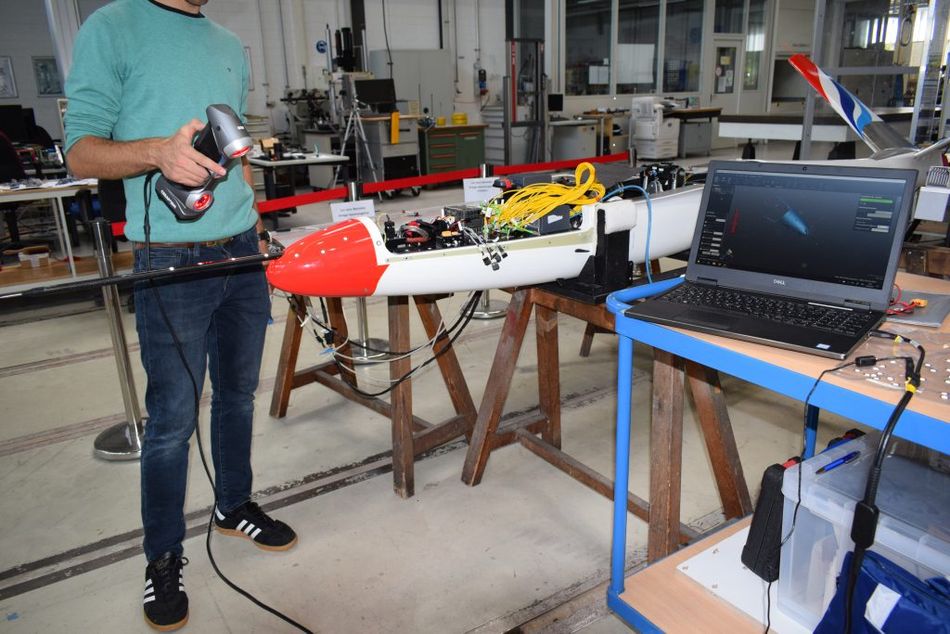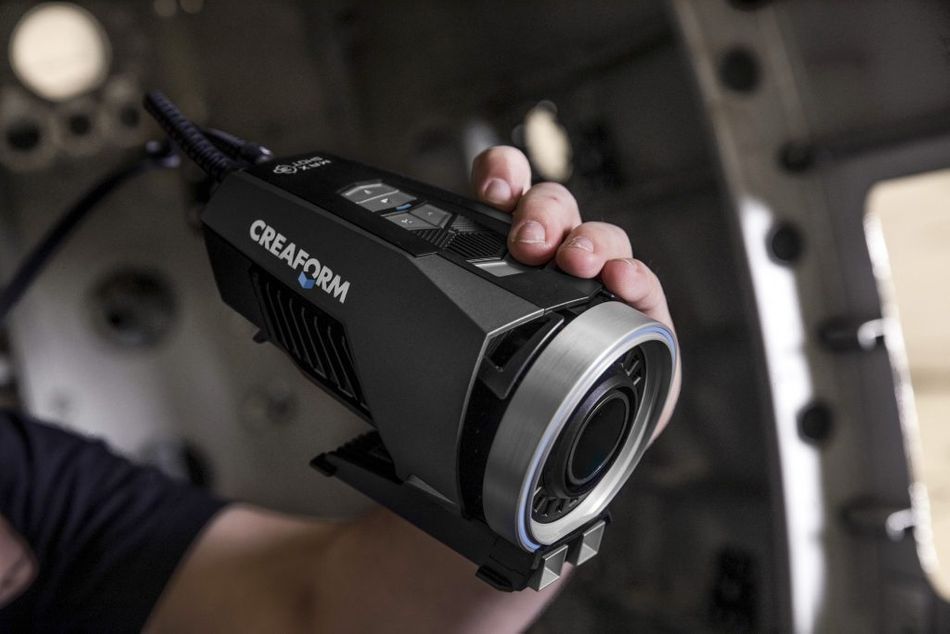Flexible 3D Scanning In Research
The Chair for Aerospace Systems is an integrating chair dealing with the aircraft in its entirety and the integration within civil and/or military aviation.
The Chair for Aerospace Systems is an integrating chair dealing with the aircraft in its entirety and the integration within civil and/or military aviation. In addition to civil and military aircraft design, its focus is on the derivation and analysis of aviation boundary conditions as well as on the evaluation of aircraft according to these boundary conditions and requirements. As an integrating chair of the Faculty for Aviation, Astronautics, and Geodesy at the Technical University of Munich, the Chair for Aerospace Systems covers the complex system of aeronautical engineering in teaching and research subareas.
The research project:
Within the framework of the European research project FLEXOP (Flutter Free Envelope Expansion for Economical Performance Improvement), new methods are being developed and validated from very light—and therefore flexible—wing structures for the design of active and passive systems for flutter damping. Under the European Union’s research and innovation program, Horizon 2020, research and industrial partners from six different nations work on control algorithms, actuators and design optimization as well as on unmanned flight demonstrators with 7 m wingspans and turbine drives on which the developed approaches will be tested.
Several sensors on the flight demonstrator, such as the pitot tube for measuring flight speed, had to be oriented in the flight direction as accurately as possible for error-free measurements. In order to take into account errors in the measurement data caused by an installation angle deviating from 0°, this angle had to be determined very precisely by means of a 3D scan. The challenge is that the angle relative to the nose of the aircraft must be determined and the pitot tube is attached to the tip of nose boom that is approximately 0.5 m long.

3D scanning advantages
A 3D scanner allows for a multitude of different measurements and offers numerous possible applications at the Institute for Aviation and Astronautics at the TU Munich—all of which cannot be fully undertaken by other systems. Potential applications include the scanning of parts and components in order to create precisely fitting attachments using 3D printing processes. Furthermore, the profile geometries of purchased aircraft wings or propellers can be defined. This can improve the accuracy and simplicity of certain measurement and research tasks. “The ability to scan relatively small parts with the HandySCAN 3D as well as large structures, such as wings with wingspans of several meters under static loads, using the MaxSHOT 3D camera has convinced our Chair of the Creaform systems. The scanning of components up to complete aircraft allows us to quantify uncertainties during the construction process and production. We can take into account their effects during flight testing for the validation of aircraft design simulations,” explained Prof. Dr-Ing Mirko Hornung, Head of the Chair of Aviation Systems at the Faculty for Aviation, Astronautics, and Geodesy of the TU Munich.
 Creaform’s optical coordinate measurement system, the MaxSHOT 3D, allows for the measurement of structures several meters in length
Creaform’s optical coordinate measurement system, the MaxSHOT 3D, allows for the measurement of structures several meters in length Experiences with the system are consistently positive. The acquisition and measurement of components can be quickly learned even by inexperienced personnel. These technologies can therefore also be integrated into a future university internship in which students are carry out measurement tasks.
History of the Faculty for Aviation, Astronautics, and Geodesy’s Chair for Aerospace Systems at the Technical University of Munich
Thanks to the initiative of the then head of the Institute for Aviation and Astronautics at the Technical University, Prof. Dr.-Ing. Harry O. Ruppe, the Endowed Chair for Aeronautical Technology was founded on September 18, 1989. At the start of the winter semester in 1989-1990, Prof. Dipl.-Ing. Gero Madelung, who had worked for many years in the management of Messerschmitt-Bölkow-Blohm GmbH, took over the Chair as the first professor ordinarius. After 5 years, the Chair was officially affiliated with the Technical University of Munich. After the retirement of Prof. Madelung, Prof. Dr.-Ing. Dieter Schmitt was entrusted with the lectureship in the summer of 1996. Since the departure of Prof. Dr.-Ing. Dieter Schmitt in September 2002, the Chair has been temporarily headed by Prof. Dr.-Ing. Horst Baier. Since January 2010, the former Chair for Aeronautical Technology is now lead by Prof. Dr.-Ing. Mirko Hornung as the Chair for Aerospace Systems.
